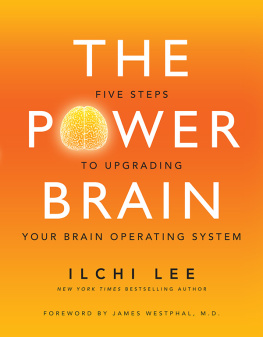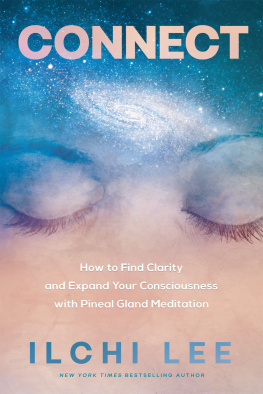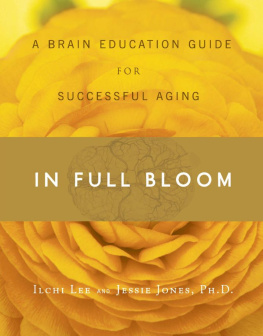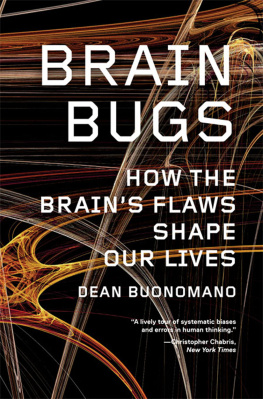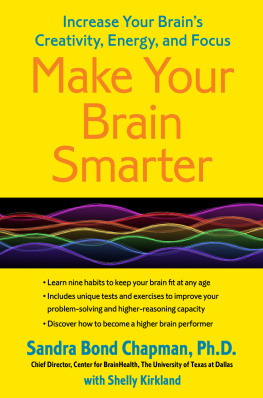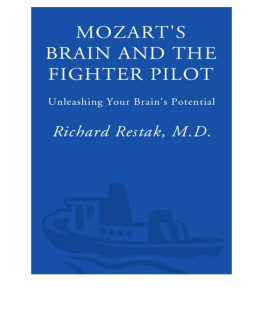
459 N. Gilbert Rd. Suite C-210
Gilbert, AZ 85234
www.BestLifeMedia.com
480-926-2480
Copyright 2016 by Ilchi Lee
All rights reserved. No part of this book may be reproduced or transmitted in any form or by any means, electronic or mechanical, including photocopying, recording, or by any information storage or retrieval system, without permission in writing from the publisher.
Please understand that this book is not intended to treat, cure, or prevent any disease or illness. The information in this book is intended for educational purposes only, not as medical advice. Always check with your health professional before changing your diet, eating, or health program. The author and publisher disclaim any liability arising directly or indirectly from the use and application of any of the books contents.
First paperback edition: April 2016
Library of Congress Control Number: 2016935383
ISBN: 978-1-935127-86-4
Not only our pleasure, our joy, and our laughter, but also our sorrow, pain, grief, and tears arise from the brain, and the brain alone.
HIPPOCRATES (C. 460 BC)
You must find your true self. And that true self has always been within youinside your brain.
SAM IL SHIN GO, ANCIENT KOREAN SCRIPTURE
FOREWORD
The Wisdom of Brain Discovery
I believe that there is an important difference between knowledge and wisdom. As a mental health professional, I possess lots of knowledge. I know myriad psychological theories and dozens of therapeutic methods. As a hospital administrator, I know how medical institutions work and how to navigate the system. I use this knowledge every day in the work I do. Ilchi Lee, on the other hand, has built a career based on wisdom, and that is why I am grateful to be able to recommend this book.
Wisdom is the ability to make sound choices and to keep priorities straight. This, in essence, is what Ilchi Lees Brain Education program teaches. Ilchi Lee guides people to use their brains wisely for more balanced, healthier lives. He has arrived at his understandings not just by studying facts and theories, but even more importantly through intuitive insight and practical work with thousands of people from all walks of life.
His method differs markedly from the approach traditionally taken by psychologists and psychiatrists. Why, then, do I recommend it? First of all, I have personally experienced the powerful benefits of this system. I know it works, because it has worked for me. Secondly, the Brain Education program complements current theories and practices within the mental health profession.
Until quite recently, mental health practitioners have largely focused on repairing weaknesses and understanding mental suffering. Increasingly, however, weve come to realize that people need ways to maintain a healthier state of being in everyday life, rather than waiting until difficulties arise. I believe Brain Education offers a strikingly practical way to do just that. Through its five-step process, people of all ages can nurture and develop their own internal wisdom and well-being as they gain a sense of meaning and purpose for their lives.
A Step-by-Step Approach
First, and perhaps most importantly, Brain Education effectively targets one of the biggest health problems of our timestress. As Chief of Psychiatry of the Adult Mental Health Division of the Hawaii Department of Health, I myself am no stranger to stress. More than anything else, Ive needed to learn how to quiet my thinking mind. Each night, Id take my work home with me and replay the days problems over and over in my head. At the end of a hard day, Id often reward myself with my favorite comfort foodfried chicken. After practicing the Brain Education method for just a short time, I found that my mind had calmed significantly. Im no longer dependent on caffeine for energy, and my cravings for unhealthy food have diminished.
The stress reduction techniques in Step One of the Brain Education system cultivate the trait of mindfulness, the ability to focus awareness in the present moment. The stress-reducing benefits of mindfulness have been confirmed in numerous scientific studies. Brain Education specifically works to develop sensory awarenesswhat in psychological terminology we call interoception, the awareness and interpretation of signals originating in the body. The study of interoception is relatively new for Western medicine, yet interoception is now considered critical for personal well-being and motivation. Abnormal interoception contributes to multiple problems impacting public health, including addiction, depression, eating disorders, chronic pain, and post-traumatic stress disorder.
Step Two works on brain flexibility, helping us to accept change more readily. This step corresponds to the Western neuroscience concept of neuroplasticity. The work of multiple neuroscientists during the latter half of the twentieth century led to the current understanding that the adult brain is constantly changing, removing, and creating connections in response to its use. Exerciseespecially low-intensity exercise like the Brain Education program suggestsproduces neurotrophins, brain proteins that support the brains ability to change its connections.
Step Three helps free the brain from unhelpful emotional patterns. In emotionally charged situations, normal individuals (those without psychiatric symptoms) show activation of the brain areas that process emotions, but they show even stronger activation of the areas involved in planning and decision-making. Unfortunately, many people suffer from unhealthy emotional reactions that dont allow them to access their planning and decision-making wisdom. Brain Education techniques help us to access and practice this ability, replacing knee-jerk reactivity with healthy problem-solving skills.
Over the past 20 years, numerous Western medical and psychological studies have demonstrated that meditation and spiritual practices, such as those in the Brain Education method, strengthen the structure and function of the brains executive control and decision-making areas. In addition, a meta-analysis of studies on the psychological effects of meditation shows a meaningful reduction in anxiety and negative emotions. In other words, meditation improves the ability to recognize and consciously respond to emotions, freeing us from unhelpful responses.
Step Four focuses on integrating brain functions and unleashing our potential by revisiting and changing our responses to core information, such as beliefs about ourselves and preconceptions about others and the world. This parallels the Western psychological concept of cognitive reappraisalchanging an emotional response by reinterpreting the meaning of the information that triggered the emotional stimulus in the first place. Often, our core informationwhat Brain Education calls our Brain Operating Systemisnt consciously known to us. It only becomes apparent through our emotional responses, attitudes, and memories. By identifying and changing our negative responses, we can edit our core information through the miracle of neuroplasticity. Western research on cognitive reappraisal and decentering processes started only recently, so theres limited evidence to indicate whether mindfulness supports cognitive reappraisal and decentering. Anecdotal evidence, however, suggests promising potential.
Step Five of Brain Education trains us to use the brains functions with intention. This is related to the Western psychological concepts of self-efficacy, self-control, and locus of control. Self-efficacy is defined as the strength of an individuals belief in their ability to complete tasks and reach goals. Self-control is the ability to control ones emotions, behavior, and desires in the face of external demands. Locus of control refers to the extent to which people believe they can control the events affecting them. Numerous psychological studies have demonstrated that high self-control and self-efficacy and an internal locus of control are related to a wide range of positive outcomesgreater overall well-being, healthier lifestyle choices, higher job satisfaction, greater success, and better interpersonal relations.

